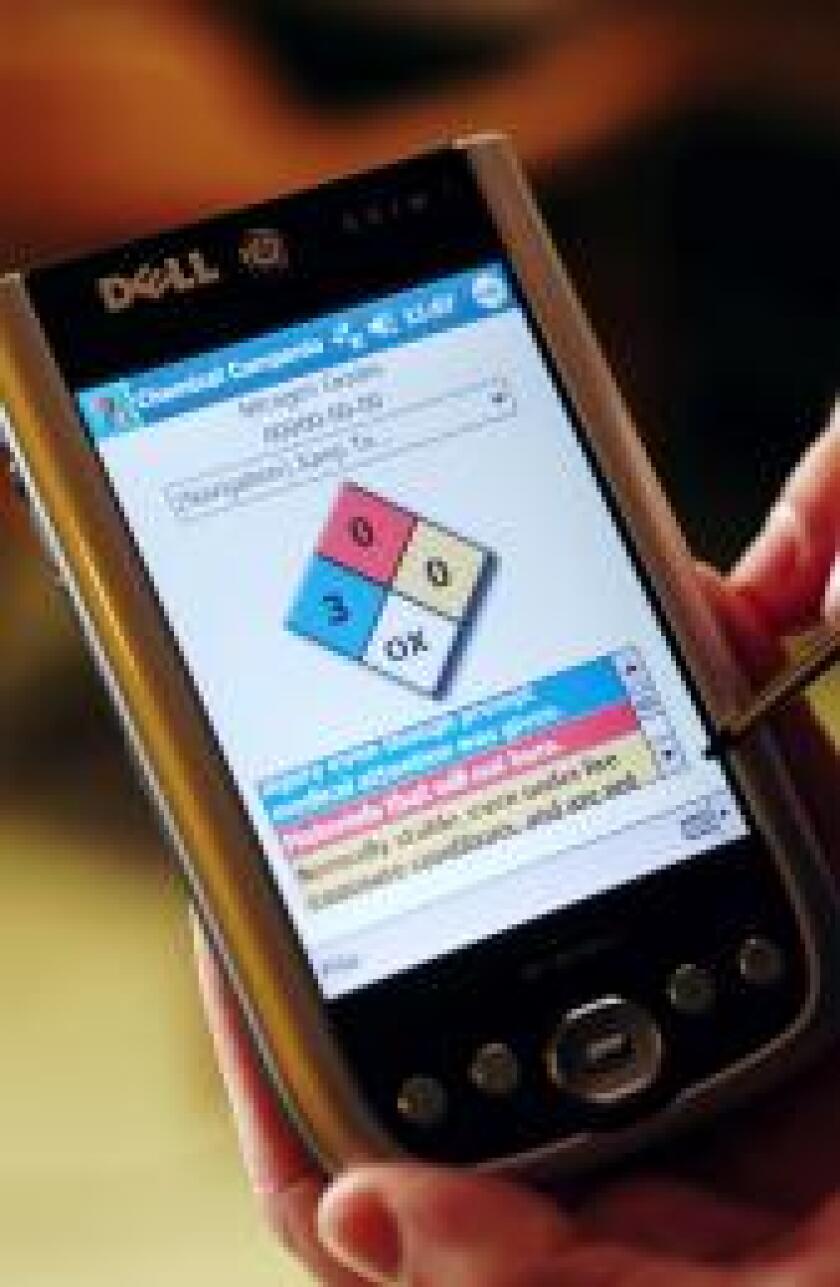Once the crew arrives with on-board chemical sensors activated, they plug the information into several tools including: the Wireless Information System for Emergency Responders, the Computer-Aided Management of Emergency Operations chemical database, the 2008 Emergency Response Guide and the Chemical Companion decision support tool.

Photo: The Chemical Companion software tool runs on personal digital assistants to help first responders obtain the information they need to make critical decisions. Courtesy of the Georgia Tech Research Institute.]
The Chemical Companion is a Windows-based reference of 130 of the most common chemicals involved in hazardous materials incidents including their properties, signs of exposure and possible antidotes.
In the summer 2009, the Douglas County Fire Department responded to the scene of an overturned tanker truck involving an unknown mixture of chemicals for which a single material safety data sheet (MSDS) was not available and a chemist wasn’t immediately available on scene. Responders entered how the substance was reacting and its temperature into the Chemical Companion.
“We narrowed [it] down to where we had an idea that it was more closely related to one of the MSDS sheets than the other,” Ransom said. “The Chemical Companion is great about being able to measure symptomology and help you kind of narrow down your potential hazard.”
Smart Companion
Ease of use and an interface that’s mostly driven by menu choices helps minimize mistakes, Ransom said. “When you’re dealing with intricate chemical names — one misspelling can change the whole chemical compound — it’s really nice to be able to have your text in there,” she said.
The Chemical Companion also can help first responders choose the appropriate suit for a spill and determine estimated time a responder can work in contact with a chemical at a particular rate before it permeates the suit. “It is nice to know that you have time in a certain type of suit or with boots or with different types of gloves that you can work in the product before it has the potential to permeate the material and become contaminated,” she said.
The tool was developed by researchers at the Georgia Tech Research Institute with input from first responders and HAZMAT teams. It operates on Windows CE-based personal digital assistants.
The Chemical Companion is available as a free download for emergency responders. Private-sector personnel involved with hazardous materials response may download the software with an approved application.
[Photo courtesy of Win Henderson/FEMA.]








